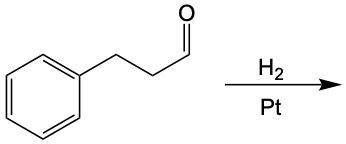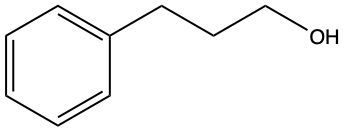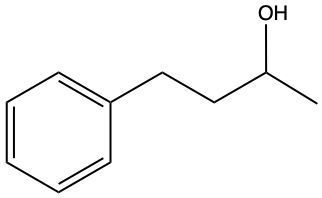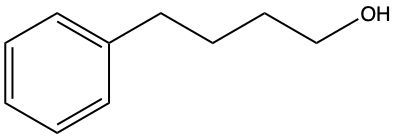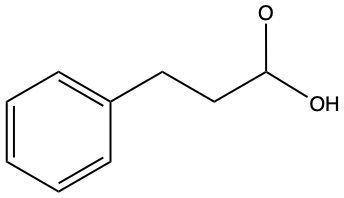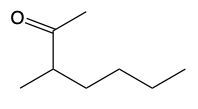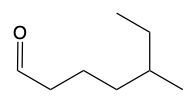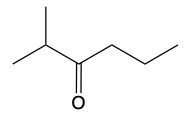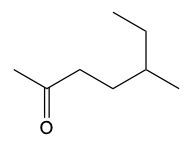Now, when it comes to the reduction of aldehydes and ketones, recall that reduction uses a reducing agent to add as many carbon-hydrogen bonds as possible without breaking any carbon-carbon bonds. So that's the whole idea of reduction. If we take a look here, we're only paying attention to what's within this shaded box. That's what's really the most important. But stuff lies outside that box, so let's take a look. So if we're starting here over here on the right, we can say that the most oxidized form of carbon exists as carbon dioxide. Carbon is making its maximum 4 bonds, all of them being to oxygen. Once I start the reduction process, we're going to reduce it some, and we're going to start to add as many carbon-hydrogen bonds as possible. Carbon can only go up to 4 bonds. So to do that, we have to break one of these carbon-oxygen bonds. So that's where this H comes in. Carbon needs to keep making 4 bonds, so that's where this H comes in. Oxygen also needs to make its ideal number of bonds, which is 2. So we add a hydrogen to it as well. If we keep going, we enter the shaded region here. So here we keep adding carbon-hydrogen bonds, so we have to get rid of this bond here, and that's how we wind up with this aldehyde. This aldehyde can undergo further reduction, so we're going to add more carbon-hydrogen bonds to it. Meaning we have to break this carbon-oxygen bond here. So here goes the H that I've added to the carbon, oxygen still wants to keep making 2 bonds, so here it would have its hydrogen added to it as well. So we can see here that reducing an aldehyde has created an alcohol. If we wanted, we could continue further with strong reduction to help create an alkane at the end. The alkane being the last stop in terms of reduction process. But what we need to take from this is that we can reduce an aldehyde into an alcohol. And even if we had a ketone, we could do the same. Because if we reduced that, we want to add as many carbon-hydrogen bonds as we want. So we'd again remove one of these carbon-oxygen bonds. So we'd have our carbon with its 2 carbons, 1 on each side, its newly gained hydrogen, and then the oxygen would also gain a hydrogen. So we can see here that we can reduce both aldehydes and ketones to produce alcohols. Okay. So that's the whole basis when it comes to reducing aldehydes and ketones. Doing so changes them both into alcohols.
- 1. Matter and Measurements4h 29m
- What is Chemistry?5m
- The Scientific Method9m
- Classification of Matter16m
- States of Matter8m
- Physical & Chemical Changes19m
- Chemical Properties8m
- Physical Properties5m
- Intensive vs. Extensive Properties13m
- Temperature (Simplified)9m
- Scientific Notation13m
- SI Units (Simplified)5m
- Metric Prefixes24m
- Significant Figures (Simplified)11m
- Significant Figures: Precision in Measurements7m
- Significant Figures: In Calculations19m
- Conversion Factors (Simplified)15m
- Dimensional Analysis22m
- Density12m
- Specific Gravity9m
- Density of Geometric Objects19m
- Density of Non-Geometric Objects9m
- 2. Atoms and the Periodic Table5h 23m
- The Atom (Simplified)9m
- Subatomic Particles (Simplified)12m
- Isotopes17m
- Ions (Simplified)22m
- Atomic Mass (Simplified)17m
- Atomic Mass (Conceptual)12m
- Periodic Table: Element Symbols6m
- Periodic Table: Classifications11m
- Periodic Table: Group Names8m
- Periodic Table: Representative Elements & Transition Metals7m
- Periodic Table: Elemental Forms (Simplified)6m
- Periodic Table: Phases (Simplified)8m
- Law of Definite Proportions9m
- Atomic Theory9m
- Rutherford Gold Foil Experiment9m
- Wavelength and Frequency (Simplified)5m
- Electromagnetic Spectrum (Simplified)11m
- Bohr Model (Simplified)9m
- Emission Spectrum (Simplified)3m
- Electronic Structure4m
- Electronic Structure: Shells5m
- Electronic Structure: Subshells4m
- Electronic Structure: Orbitals11m
- Electronic Structure: Electron Spin3m
- Electronic Structure: Number of Electrons4m
- The Electron Configuration (Simplified)22m
- Electron Arrangements5m
- The Electron Configuration: Condensed4m
- The Electron Configuration: Exceptions (Simplified)12m
- Ions and the Octet Rule9m
- Ions and the Octet Rule (Simplified)8m
- Valence Electrons of Elements (Simplified)5m
- Lewis Dot Symbols (Simplified)7m
- Periodic Trend: Metallic Character4m
- Periodic Trend: Atomic Radius (Simplified)7m
- 3. Ionic Compounds2h 18m
- Periodic Table: Main Group Element Charges12m
- Periodic Table: Transition Metal Charges6m
- Periodic Trend: Ionic Radius (Simplified)5m
- Periodic Trend: Ranking Ionic Radii8m
- Periodic Trend: Ionization Energy (Simplified)9m
- Periodic Trend: Electron Affinity (Simplified)8m
- Ionic Bonding6m
- Naming Monoatomic Cations6m
- Naming Monoatomic Anions5m
- Polyatomic Ions25m
- Naming Ionic Compounds11m
- Writing Formula Units of Ionic Compounds7m
- Naming Ionic Hydrates6m
- Naming Acids18m
- 4. Molecular Compounds2h 18m
- Covalent Bonds6m
- Naming Binary Molecular Compounds6m
- Molecular Models4m
- Bonding Preferences6m
- Lewis Dot Structures: Neutral Compounds (Simplified)8m
- Multiple Bonds4m
- Multiple Bonds (Simplified)6m
- Lewis Dot Structures: Multiple Bonds10m
- Lewis Dot Structures: Ions (Simplified)8m
- Lewis Dot Structures: Exceptions (Simplified)12m
- Resonance Structures (Simplified)5m
- Valence Shell Electron Pair Repulsion Theory (Simplified)4m
- Electron Geometry (Simplified)8m
- Molecular Geometry (Simplified)11m
- Bond Angles (Simplified)11m
- Dipole Moment (Simplified)15m
- Molecular Polarity (Simplified)7m
- 5. Classification & Balancing of Chemical Reactions3h 17m
- Chemical Reaction: Chemical Change5m
- Law of Conservation of Mass5m
- Balancing Chemical Equations (Simplified)13m
- Solubility Rules16m
- Molecular Equations18m
- Types of Chemical Reactions12m
- Complete Ionic Equations18m
- Calculate Oxidation Numbers15m
- Redox Reactions17m
- Spontaneous Redox Reactions8m
- Balancing Redox Reactions: Acidic Solutions17m
- Balancing Redox Reactions: Basic Solutions17m
- Balancing Redox Reactions (Simplified)13m
- Galvanic Cell (Simplified)16m
- 6. Chemical Reactions & Quantities2h 35m
- 7. Energy, Rate and Equilibrium3h 46m
- Nature of Energy6m
- First Law of Thermodynamics7m
- Endothermic & Exothermic Reactions7m
- Bond Energy14m
- Thermochemical Equations12m
- Heat Capacity19m
- Thermal Equilibrium (Simplified)8m
- Hess's Law23m
- Rate of Reaction11m
- Energy Diagrams12m
- Chemical Equilibrium7m
- The Equilibrium Constant14m
- Le Chatelier's Principle23m
- Solubility Product Constant (Ksp)17m
- Spontaneous Reaction10m
- Entropy (Simplified)9m
- Gibbs Free Energy (Simplified)18m
- 8. Gases, Liquids and Solids3h 25m
- Pressure Units6m
- Kinetic Molecular Theory14m
- The Ideal Gas Law18m
- The Ideal Gas Law Derivations13m
- The Ideal Gas Law Applications6m
- Chemistry Gas Laws16m
- Chemistry Gas Laws: Combined Gas Law12m
- Standard Temperature and Pressure14m
- Dalton's Law: Partial Pressure (Simplified)13m
- Gas Stoichiometry18m
- Intermolecular Forces (Simplified)19m
- Intermolecular Forces and Physical Properties11m
- Atomic, Ionic and Molecular Solids10m
- Heating and Cooling Curves30m
- 9. Solutions4h 10m
- Solutions6m
- Solubility and Intermolecular Forces18m
- Solutions: Mass Percent6m
- Percent Concentrations10m
- Molarity18m
- Osmolarity15m
- Parts per Million (ppm)13m
- Solubility: Temperature Effect8m
- Intro to Henry's Law4m
- Henry's Law Calculations12m
- Dilutions12m
- Solution Stoichiometry14m
- Electrolytes (Simplified)13m
- Equivalents11m
- Molality15m
- The Colligative Properties15m
- Boiling Point Elevation16m
- Freezing Point Depression9m
- Osmosis16m
- Osmotic Pressure9m
- 10. Acids and Bases3h 29m
- Acid-Base Introduction11m
- Arrhenius Acid and Base6m
- Bronsted Lowry Acid and Base18m
- Acid and Base Strength17m
- Ka and Kb12m
- The pH Scale19m
- Auto-Ionization9m
- pH of Strong Acids and Bases9m
- Acid-Base Equivalents14m
- Acid-Base Reactions7m
- Gas Evolution Equations (Simplified)6m
- Ionic Salts (Simplified)23m
- Buffers25m
- Henderson-Hasselbalch Equation16m
- Strong Acid Strong Base Titrations (Simplified)10m
- 11. Nuclear Chemistry56m
- BONUS: Lab Techniques and Procedures1h 38m
- BONUS: Mathematical Operations and Functions47m
- 12. Introduction to Organic Chemistry1h 34m
- 13. Alkenes, Alkynes, and Aromatic Compounds2h 12m
- 14. Compounds with Oxygen or Sulfur1h 6m
- 15. Aldehydes and Ketones1h 1m
- 16. Carboxylic Acids and Their Derivatives1h 11m
- 17. Amines38m
- 18. Amino Acids and Proteins1h 51m
- 19. Enzymes1h 37m
- 20. Carbohydrates1h 46m
- Intro to Carbohydrates4m
- Classification of Carbohydrates4m
- Fischer Projections4m
- Enantiomers vs Diastereomers8m
- D vs L Enantiomers8m
- Cyclic Hemiacetals8m
- Intro to Haworth Projections4m
- Cyclic Structures of Monosaccharides11m
- Mutarotation4m
- Reduction of Monosaccharides10m
- Oxidation of Monosaccharides7m
- Glycosidic Linkage14m
- Disaccharides7m
- Polysaccharides7m
- 21. The Generation of Biochemical Energy2h 8m
- 22. Carbohydrate Metabolism2h 22m
- 23. Lipids2h 26m
- Intro to Lipids6m
- Fatty Acids25m
- Physical Properties of Fatty Acids6m
- Waxes4m
- Triacylglycerols12m
- Triacylglycerol Reactions: Hydrogenation8m
- Triacylglycerol Reactions: Hydrolysis13m
- Triacylglycerol Reactions: Oxidation7m
- Glycerophospholipids15m
- Sphingomyelins13m
- Steroids15m
- Cell Membranes7m
- Membrane Transport10m
- 24. Lipid Metabolism1h 45m
- 25. Protein and Amino Acid Metabolism1h 37m
- 26. Nucleic Acids and Protein Synthesis2h 54m
- Intro to Nucleic Acids4m
- Nitrogenous Bases16m
- Nucleoside and Nucleotide Formation9m
- Naming Nucleosides and Nucleotides13m
- Phosphodiester Bond Formation7m
- Primary Structure of Nucleic Acids11m
- Base Pairing10m
- DNA Double Helix6m
- Intro to DNA Replication20m
- Steps of DNA Replication11m
- Types of RNA10m
- Overview of Protein Synthesis4m
- Transcription: mRNA Synthesis9m
- Processing of pre-mRNA5m
- The Genetic Code6m
- Introduction to Translation7m
- Translation: Protein Synthesis18m
Reduction of Aldehydes and Ketones - Online Tutor, Practice Problems & Exam Prep
 Created using AI
Created using AIReduction of aldehydes and ketones involves adding hydrogen to convert them into primary and secondary alcohols, respectively. The reducing agent, typically H2, works with catalysts like nickel, platinum, or palladium. During this process, one carbon-oxygen bond is broken, allowing the carbonyl carbon to bond with hydrogen, resulting in an alcohol. Aldehydes yield primary alcohols, while ketones produce secondary alcohols. This transformation is crucial in organic chemistry, emphasizing the importance of understanding carbonyl compounds and their reduction pathways.
Reduction Reactions Concept 1
Video transcript
Reduction of Aldehydes and Ketones Example 1
Video transcript
Which of the following compounds could not be reduced? So if we take a look at our options, we have 2,2-dimethylpentane, 2-methyl-1-pentanal, 3-ethyl-2-heptanone, and then 4-bromoheptanoic acid. Now we don't need to draw all these. The names themselves tell us the identities or functional groups. Pentane, this is an alkane. Al means this is an aldehyde. One means that this is a ketone. And then oic acid, pentanoic acid that tells us this is a carboxylic acid. Alright. So remember the whole line in terms of reduction. We start out at carbon dioxide as the most oxidized form of carbon. When we reduce that, we change it into a carboxylic acid. It says what cannot be reduced? Well, we know that a carboxylic acid could be reduced if we wanted to, we could reduce it to an aldehyde. And we know that an aldehyde can be reduced to an alcohol. So this is out, and this is out. We also know that a ketone can be reduced to an alcohol as well just like an aldehyde. The answer here is option A, an alkane. Remember we said that the alkane is the end stop of our reduction line, right? Once we get to that point, we've added as many hydrogens as we can to our carbon. So there's nothing else we can do. Remember we cannot break carbon-carbon bonds. So even if that carbon is connected to another carbon, there's nothing we can do to sever that bond to add another hydrogen. So an alkane represents the most reduced form, therefore it cannot undergo reduction, and therefore option A is the answer.
Reduction of Aldehydes and Ketones Concept 2
Video transcript
Now, we can say here that aldehydes and ketones are reduced to primary and secondary alcohols respectively. The reducing agent within these processes is H2. And the catalyst that helps facilitate this reduction, we can have them as metals which are Ni (nickel), platinum, or palladium. Now the whole process, the whole result of this reduction is that the carbonyl oxygen gains an h and the carbonyl carbon also gains an h. If we take a look here, we start out with an aldehyde. We're reducing it with H2 and nickel. Remember reduction means we have to try to make as many carbon-hydrogen bonds as we can without breaking any carbon-carbon bonds. To do this, we'd have to break one of the carbon-oxygen bonds here. And when we break that bond, carbon still needs to make its 4 bonds and oxygen would ideally want to still make its 2. So, this H2 basically gives itself up: one h goes to the carbon, the other h goes to the oxygen. As a result of this, we see that we made a primary alcohol.
A ketone, well, a ketone follows the same process. We're going to say we use H2. And remember, we could use nickel, platinum, or palladium as our metal catalyst. And again, we're trying to get rid of one of these carbon-oxygen bonds. To make up for that loss, carbon's going to bond to a hydrogen and oxygen is going to bind to a hydrogen. What we make now is a secondary alcohol. So just remember, when it comes to reduction, both aldehydes and ketones can be reduced. Aldehydes typically create primary alcohols. Ketones primarily make secondary alcohols. Okay. So, they're going to make secondary alcohols once they undergo reduction. Alright. So just keep that in mind.
Reduction of Aldehydes and Ketones Example 2
Video transcript
Determine the alcohol product formed in the following reaction. So here we have a ketone, and we're using our reducing agent of H2 with our metal catalyst, nickel. Remember, ketones get reduced to secondary alcohols. What's going to happen here is we're going to cut one of these carbon-oxygen bonds, and to maintain 4 bonds for carbon and 2 bonds for oxygen, each one of them gains a hydrogen. So what we'll have here is we'll have CH3CH2 still. This is still connected to this carbon, which is still connected to this oxygen. And then we have CH2CH3 again. So this H2 here, one of the H's will go to carbon and the other H will go to oxygen. We've just created a secondary alcohol by reducing the ketone reactant.
Determine the alcohol product formed in the following reaction.
Determine which reactant should be used to produce the following alcohol.
Do you want more practice?
Here’s what students ask on this topic:
What is the reducing agent used in the reduction of aldehydes and ketones?
The reducing agent commonly used in the reduction of aldehydes and ketones is hydrogen gas (H2). This process typically involves a catalyst, which can be metals such as nickel (Ni), platinum (Pt), or palladium (Pd). The role of the reducing agent is to add hydrogen atoms to the carbonyl group, converting aldehydes into primary alcohols and ketones into secondary alcohols. The catalyst facilitates the breaking of the carbon-oxygen bond and the addition of hydrogen atoms to the carbonyl carbon and oxygen.
 Created using AI
Created using AIWhat are the products of reducing aldehydes and ketones?
When aldehydes are reduced, they form primary alcohols. For example, the reduction of formaldehyde (HCHO) yields methanol (CH3OH). On the other hand, the reduction of ketones results in secondary alcohols. For instance, the reduction of acetone (CH3COCH3) produces isopropanol (CH3CHOHCH3). This transformation is achieved by adding hydrogen atoms to the carbonyl group, facilitated by a catalyst such as nickel, platinum, or palladium.
 Created using AI
Created using AIWhat role do catalysts play in the reduction of aldehydes and ketones?
Catalysts such as nickel (Ni), platinum (Pt), or palladium (Pd) play a crucial role in the reduction of aldehydes and ketones. They facilitate the breaking of the carbon-oxygen bond in the carbonyl group and the addition of hydrogen atoms. The catalyst provides a surface for the hydrogen gas (H2) to dissociate into individual hydrogen atoms, which then react with the carbonyl compound. This process helps convert aldehydes into primary alcohols and ketones into secondary alcohols efficiently.
 Created using AI
Created using AIHow does the reduction of aldehydes differ from the reduction of ketones?
The reduction of aldehydes and ketones follows a similar mechanism but yields different products. Aldehydes are reduced to primary alcohols, while ketones are reduced to secondary alcohols. This difference arises because aldehydes have a hydrogen atom attached to the carbonyl carbon, making them less sterically hindered and more reactive. In contrast, ketones have two alkyl groups attached to the carbonyl carbon, leading to the formation of secondary alcohols upon reduction. Both processes involve the addition of hydrogen atoms to the carbonyl group, facilitated by a catalyst.
 Created using AI
Created using AIWhat is the significance of the reduction of aldehydes and ketones in organic chemistry?
The reduction of aldehydes and ketones is a fundamental reaction in organic chemistry, crucial for synthesizing alcohols. Primary and secondary alcohols are important intermediates in various chemical syntheses, pharmaceuticals, and industrial processes. Understanding this reduction process helps chemists manipulate carbonyl compounds to create desired products. Additionally, it provides insights into reaction mechanisms and the role of catalysts, enhancing the ability to design and optimize chemical reactions for specific applications.
 Created using AI
Created using AIYour GOB Chemistry tutor
- The carbonyl group can be reduced by addition of a hydride ion (H⁻) and (H⁺) a proton . Removal of H⁻ and H⁺ f...
- The carbonyl group can be reduced by addition of a hydride ion (H⁻) and (H⁺) a proton . Removal of H⁻ and H⁺ f...
- Write the structures of the hemiacetal or hemiketal that result from reactions (a) and (b). Write the structur...
- What ketones or aldehydes might be reduced to yield the following alcohols?a. <IMAGE>b. <IMAGE>c. ...
- Draw the structures of the products formed when the following compounds react with a reducing agent.<IMAGE&...
- Can the alcohol (CH3)3COH be formed by the reduction of an aldehyde or ketone? Why or why not?
- Indicate which compounds contain aldehyde or ketone carbonyl groups.<IMAGE>
- Indicate which compounds contain aldehyde or ketone carbonyl groups. CH3CH2―O―CH2―CHO
- Indicate which compounds contain aldehyde or ketone carbonyl groups. <IMAGE>
- Draw the condensed structural formula for the alcohol formed when each of the following is reduced by hydrogen...
- Draw the condensed structural formula for the alcohol formed when each of the following is reduced by hydrogen...
- Draw the condensed structural formula for the alcohol formed when each of the following is reduced by hydrogen...
- Draw the condensed structural formula for the alcohol formed when each of the following is reduced by hydrogen...
- Draw the condensed structural or line-angle formula for the alcohol produced when hydrogen and a nickel cataly...
- Draw the condensed structural or line-angle formula for the alcohol produced when hydrogen and a nickel cataly...
- Draw the condensed structural formula for the alcohol formed when each of the following is reduced by hydrogen...
